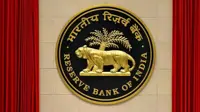The Monetary Policy Committee (MPC) of the Reserve Bank of India (RBI) at its meeting on Friday decided to keep the policy repo rate under the liquidity adjustment facility (LAF) unchanged at 4.0 per cent.

The reverse repo rate under the LAF remains unchanged at 3.35 per cent and the marginal standing facility (MSF) rate and the Bank Rate at 4.25 per cent.
The MPC also decided to continue with the accommodative stance as long as necessary to revive and sustain growth on a durable basis and continue to mitigate the impact of SARS-CoV-2 on the economy, while ensuring that inflation remains within the target going forward.
RBI said these decisions are in line with its objective of achieving the medium-term target for consumer price index (CPI) inflation of 4 per cent within a band of +/- 2 per cent, while supporting growth.
RBI noted that the upswing in domestic economic activity continued with real gross domestic product (GDP) expanding by 20.1 per cent year-on-year (y-o-y) during Q1 of FY22 on a large favourable base, However, its momentum was dragged down by the second wave of the pandemic.
The level of real GDP in Q1FY22 was 9.2 per cent below its pre-pandemic level two years ago. On the demand side, almost all the constituents of GDP posted robust y-o-y growth. On the supply side, real gross value added (GVA) increased by 18.8 per cent y-o-y during Q1FY22.
The rebound in economic activity gained traction in August-September, facilitated by the ebbing of infections, easing of restrictions and a sharp pick-up in the pace of vaccination. The south-west monsoon, after a lull in August, picked up in September, narrowing the deficit in the cumulative seasonal rainfall to 0.7 per cent below the long period average and kharif sowing exceeded the previous year’s level. Record kharif foodgrains production of 150.5 million tonnes as per the first advance estimates augurs well for the overall agricultural sector.
Also, after a prolonged slowdown, industrial production posted a high y-o-y growth for the fifth consecutive month in July.
High-frequency indicators for August-September , including railway freight traffic, cement production, electricity demand, port cargo, e-way bills, GST and toll collections, suggest progress in the normalisation of economic activity relative to pre-pandemic levels. However, indicators such as domestic air traffic, two-wheeler sales and steel consumption continue to lag. Non-oil export growth remained strong on buoyant external demand.
Headline consumer price inflation at 5.3 per cent in August softened for the second consecutive month, declining by one percentage point from the recent peak in May-June 2021. This was primarily driven by an easing in food inflation. Fuel inflation edged up to a new high in August. Core inflation, ie, inflation excluding food and fuel, remained elevated and sticky at 5.8 per cent in July-August 2021.
RBI noted that liquidity in the system remained in large surplus in August-September, with daily absorptions rising from an average of Rs7.7 lakh crore in July-August to Rs9.0 lakh crore during September and Rs9.5 lakh crore during October (up to 6 October) through the fixed rate reverse repo, the 14-day variable rate reverse repo (VRRR) and fine-tuning operations under the liquidity adjustment facility (LAF). Auctions of Rs1.2 lakh crore under the secondary market government securities acquisition programme (G-SAP 2.0) during Q2FY2021-22 provided liquidity across the term structure. As of 1 October 2021, reserve money (adjusted for the first-round impact of the change in the cash reserve ratio) expanded by 8.3 per cent (y-o-y); money supply (M3) and bank credit grew by 9.3 per cent and 6.7 per cent, respectively, as on 24 September 2021. India’s foreign exchange reserves increased by $60.5 billion in 2021-22 (up to 1 October) to $637.5 billion, partly reflecting the allocation of special drawing rights (SDRs), and were close to 14 months of projected imports for 2021-22.
Going forward, RBI expects the inflation trajectory to edge down during Q3 FY2021-22, drawing comfort from the recent catch-up in kharif sowing and likely record production. Along with adequate buffer stock of foodgrains, these factors should help to keep cereal prices range bound.
RBI noted that since the MPC’s meeting during 4-6 August 2021, the momentum of the global recovery has ebbed across geographies with the rapid spread of the delta variant of SARS-CoV-2, including in some countries with relatively high vaccination rates. After sliding to a seven-month low in August, the global purchasing managers’ index (PMI) rose marginally in September. World merchandise trade volumes remained resilient in Q2FY2021-22, but more recently there has been a loss of momentum with the persistence of supply and logistics bottlenecks.
Commodity prices remained elevated, and consequently, inflationary pressures have accentuated in most advanced economies (AEs) and emerging market economies (EMEs), prompting monetary tightening by a few central banks in the former group and several in the latter. Change in monetary policy stances, in conjunction with a likely tapering of bond purchases in major advanced economies later this year, is beginning to strain the international financial markets with a sharp rise in bond yields in major AEs and EMEs after remaining range-bound in August. The US dollar has strengthened sharply, while the EME currencies have weakened since early-September with capital outflows in recent weeks.

.webp)





.webp)

.webp)
























